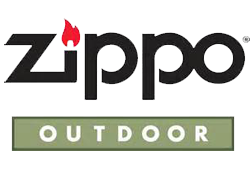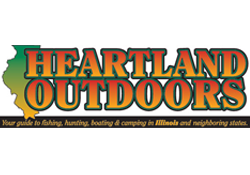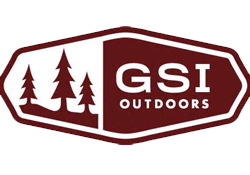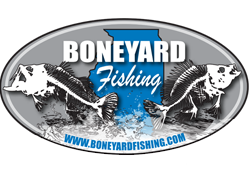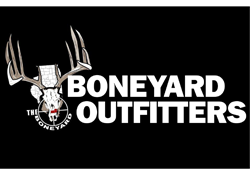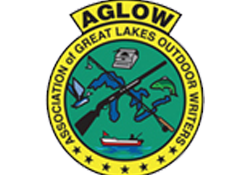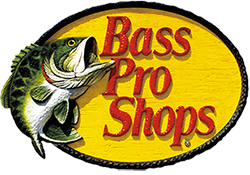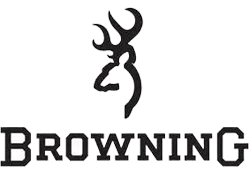A Great Hunt Requires Great Footwear – How to Find the Best Boot for Hunting
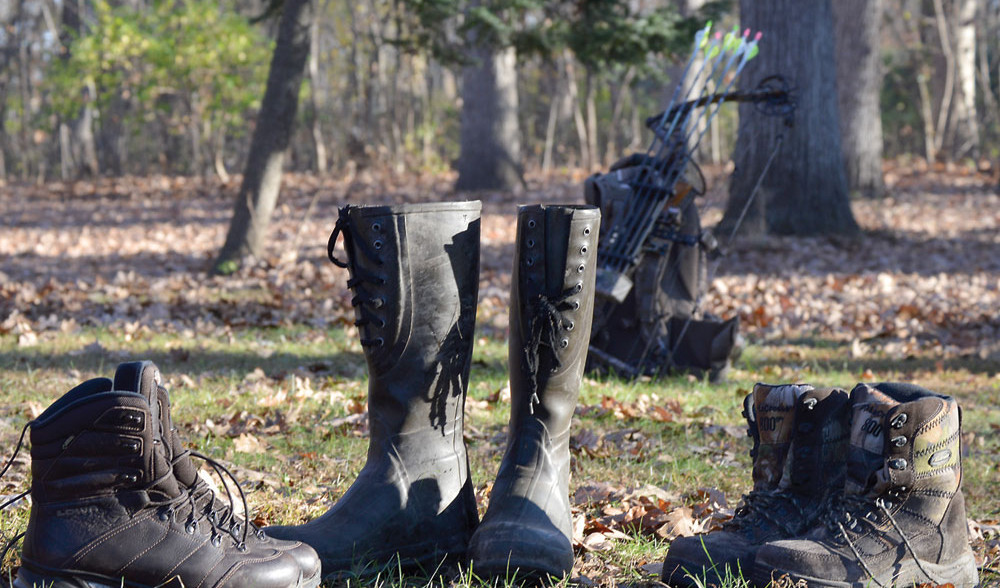
There’s no question, one of the most important pieces of outdoor gear is good footwear. If you hunt, climb, hike or participate in any outdoor activity that involves moving and walking, then footwear is paramount. What you have on your feet will have a huge impact upon your performance. After 30 years of hunting, I have had both good and bad experiences with hunting boots. And I have also spent a lot of time researching, shopping and trying different styles of boots, and brands. So the importance of having a good boot is matched by the challenge of finding one. But armed with a little knowledge, your search for the perfect boot may be a little easier. Here are a few good tips.
Match the Footwear to the Activity
For years I struggled to find the “perfect, do-it-all boot”— the boot that I could comfortably wear throughout the entire season and never have to worry about my feet again. That’s just not realistic. A boot is much like clothing, in that you need to match the style of boot to the conditions. Select a boot that best fits the specific activity and application. So realistically, that means you will most likely need two or three, possibly four sets of quality boots. For example, I mostly hunt the Midwest, so I have a variety of needs— walking medium distances, slugging through muddy plowed cornfields, and crossing creeks. So I need a boot that will stand up to all of those. A challenge that many deer hunters face in the Midwest is the balance between walking and sitting. By that I mean you may have to walk a long distance, and then spend 5 or 6 hours or more sitting in a tree stand in sub-zero temperatures. Finding a boot that can do both of those is the challenge. In those cases, instead of using polar pack boots that have my feet dripping wet with sweat by the time I reach my stand, I wear my mid-season insulated boots and augment those with foot warmers. In addition to warmth, the style of boot should match the load. Lots of walking with heavy equipment requires a more durable boot than a lighter-duty boot for shorter hiking excursions.
Fit is Everything
In addition to finding the balance of warmth, the biggest problems with the wrong boot are blistering and chaffing. Those are caused by moisture and friction. Moisture makes the skin soft, in turn allowing it to blister easier. And friction, the constant rubbing of sock on skin, also causes chaffing rawness and maybe bleeding. So the key to avoiding these is to have a boot that fits. Fit trumps everything. I had a chance to talk to Peter Sachs, General Manager of LOWA Boots LLC, a renowned manufacturer of premium boots for outdoorsmen and women. According to Sachs, “The best boot in the world is no good if it doesn’t fit. In fact market research shows that consumers choose fit as their number one preference in a boot, and comfort number two.” The best way to find that perfect fit is to shop and try on different styles and sizes, as each boot line may fit a little bit differently. According to Sachs, “The best way to insure a good boot fit is to use these simple techniques when trying a boot. You should be able to wiggle your toes, but still feel firm. But no too firm or tight where it cuts off circulation or you can’t wiggle your toes. If you have access to a ramp or step, walk on it or put your foot on the edge of the step — if you slide forward and can’t feel your toe, it’s too big. If it jams, it’s too small.” There are other factors that affect fit. Sachs suggests, “Try on the boot with the socks you intend to wear when in the field. It’s also best to try boots for fit in the afternoon. Your foot tends to swell throughout the day, it’s possible for your foot to grow a half a size by the afternoon.”
Socks Make the Difference
Socks have a big impact on foot performance. Synthetic or wool socks with no ribs are best for hunting. Those “wick” or pull the moisture away from the skin. When walking long distances or all day, your feet will sweat at some point. A sock that can pull that away from your skin is much better than a sock that simply absorbs the sweat and keeps it lying on your skin, like cotton socks. Also, one sock typically reduces friction as opposed to two socks. So if you are doing extensive walking, one sock is the way to go. And like the boots, don’t skimp on the “10 pairs for $3” special. I usually spend anywhere from $8 to $20 per pair for quality wool socks. Some 2-sock systems are great for warmth, but not for hiking long distances.
Where to buy
There are many outdoor retailers that sell boots, and more often than not they have their own brands that emulate the custom manufacturer’s lines. There are also specialty boot stores. If you are serious about your footwear, these can be a good way to go. You may pay a little more, but those stores typically have more custom options and the sales reps should be able to help you in your search for the perfect boot. And nothing beats trying them on. You can certainly buy boots online, but you are really rolling the dice. The best option is to put the time in and shop, try different boots on and see how they feel to get that perfect fit.
Know the climate
In addition to the style for fit and comfort, the boot should match the kind of climate. In dry, arid regions, you need a boot that can let your feet breathe. In wet, muddy climates a waterproof, Gortex-lined boot will perform best.
At the end of the day, outdoor footwear is like many things in life — you get what you pay for. But if you are going to hunt, climb and hike— you need healthy feet. So don’t undervalue your footwear. Your feet get you to where you’re going. They enable you to enjoy your experience. And they can save your life. For more information, tips and resources on buying the perfect boot, visit DanStefOutdoors.com
How do you know what style of boot to buy? Here are a few guidelines:
Mountains
For very rugged terrain and a lot of walking, like hunting in the Rocky Mountains, look for a boot that has a rugged sole and less insulation. A lot of walking and hiking on rocks requires a breathable boot with durable soles for stability on rough terrain. If you’re in rattlesnake country, a high snake proof boot is good.
Midwest Deer
Early season, use a lighter boot that fits the purpose. Climbing into a treestand, use a boot with plenty of ankle support as well as a good tread on the sole for better grip. I don’t like the tread to be too thick where I can’t feel the foot pegs or ladder.
Deep South or Wet, Swampy Terrain
I prefer a comfortable rubber knee boot. Keeping your feet dry is critical. Wet feet make for a long day. Or high-top, Gortex-lined waterproof boots are the way to go if you have longer distances to walk through water.
2 more great pieces of gear
- A good electric boot dryer to dry boots out at night if you do have any dampness.
- A good foot warmer like Thermacell heated insoles or the Hot-Hands style disposable foot warmers that you can slip into your boots once you get to your deer stand or waterfowl blind.
Here are a few scenarios, and the best boots for each:
Deer hunting where you have to walk long distance and climb:
Boot: A comfortable medium weight, knee boot or high top boot. When it’s cold, bring foot warmers to slip in once you get to your treestand.
Extreme Cold Deer Hunting with a short walk
Boot: use a heavy waterproof boot for walking through snow or water to keep your feet dry, and warm when you are sitting for long periods
Turkey Hunting where you are walking a lot:
Boot: Use a lighter-weight, water proof hightop boot for great walking performance and keeping your feet dry. No need for heavy insulated boots as it’s warm during turkey time.


